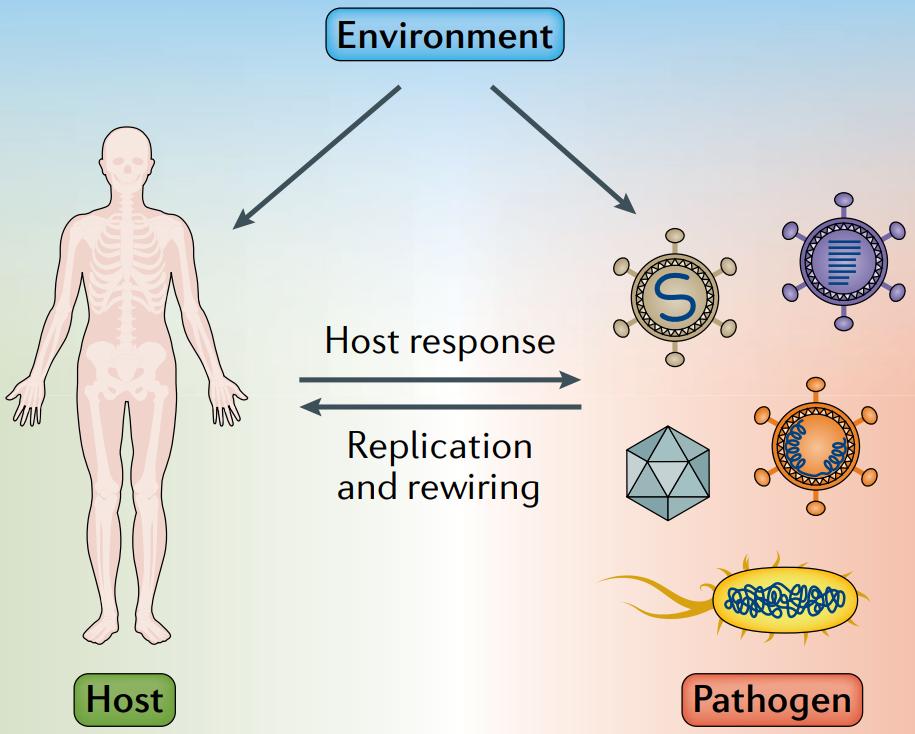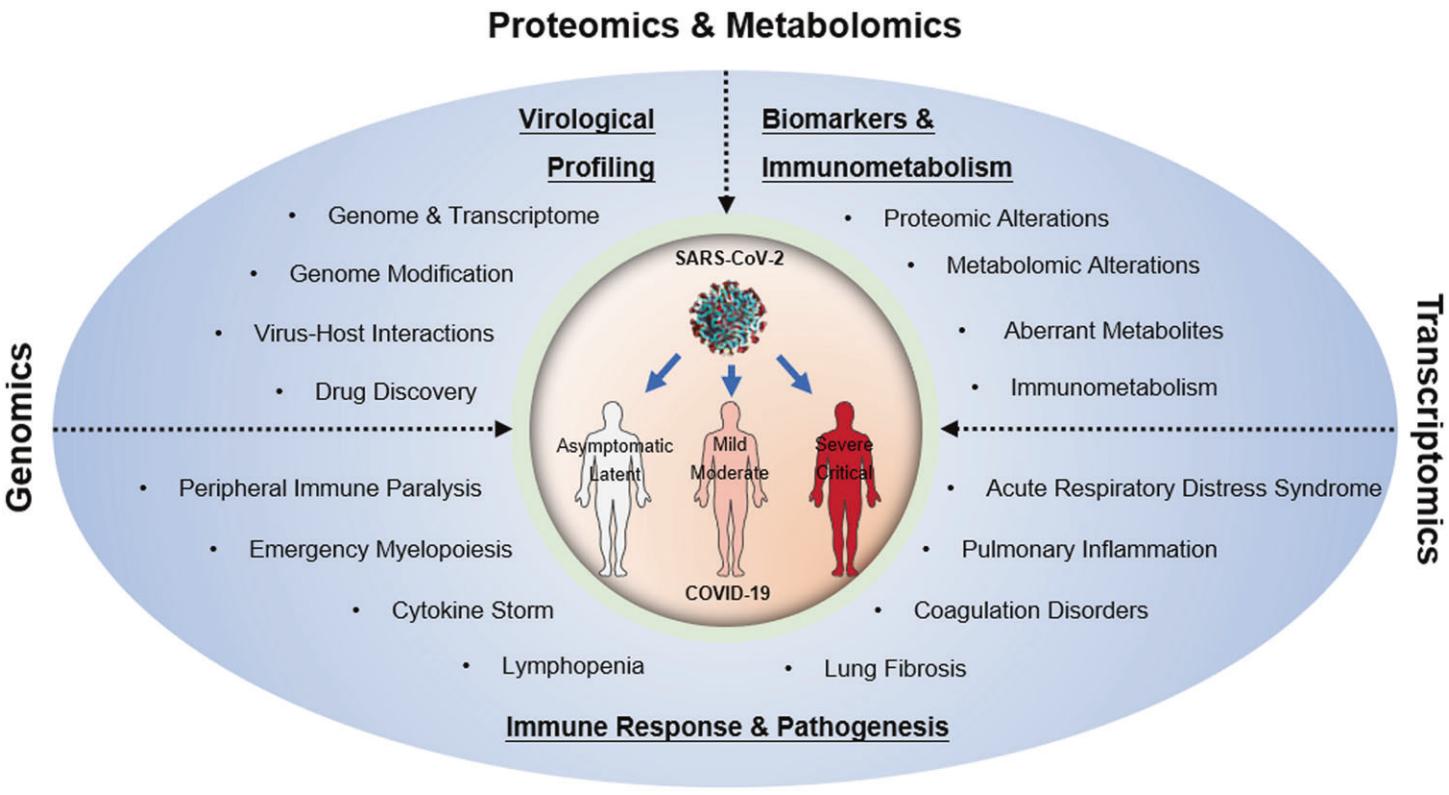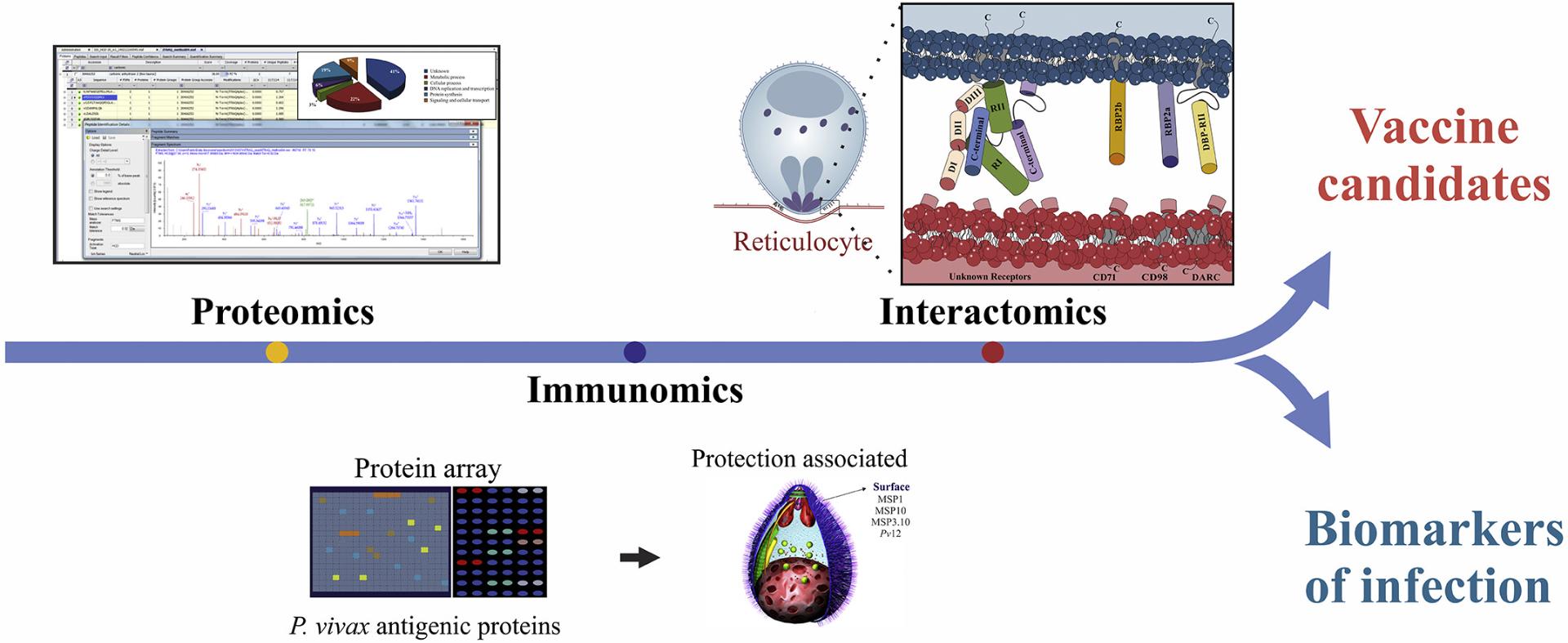Immunomics in Infectious Diseases
During an infection, the immune system produces antibodies against the pathogen. Over time, the immune complexes of infected individuals become specific to the history of infection and therefore represent a rich source of diagnostic markers. The complete characterization of antibody specificity associated with natural infections promises to provide a rich source of serological biomarkers with potential applications in molecular diagnostics, the follow-up to chemotherapy treatment, and prioritization of targets for vaccine development.
 Fig.1 Interdependence of hosts and pathogens. (Eckhardt, M., et al., 2020)
Fig.1 Interdependence of hosts and pathogens. (Eckhardt, M., et al., 2020)
Immunomics in Viral Infections
The availability of immunome mining tools has driven the design of vaccines for viral diseases and the development of in vitro diagnostics. The information mined includes antibodies and T-cell epitopes from infectious viruses, as well as experimental antigens and autoantigens. Immunomics can help identify optimal B-cell and T-cell epitopes directly from the pathogen proteome, and the literature suggests that T-cell prediction is more advanced and reliable than B-cell epitope prediction. T-cell immunity plays a key role in viral clearance, thereby reducing disease severity. In particular, memory CD4+ T cells can provide substantial protection against influenza infection through direct effector mechanisms as well as indirect regulatory and helper functions. There are currently three promising epitope-based vaccines in various stages of clinical trials, all of which are universal vaccines against influenza viruses.
 Fig.2 Multi-omics techniques help to define the immunological profile of viral infections, discover biomarkers, and elucidate pathogenesis. (Wang, X., et al., 2021)
Fig.2 Multi-omics techniques help to define the immunological profile of viral infections, discover biomarkers, and elucidate pathogenesis. (Wang, X., et al., 2021)
Immunomics in Bacterial Infections
Infectious diseases continue to be the leading cause of death worldwide, with about half of them caused by bacteria. Emerging infectious disease events are caused by strains of bacteria that are resistant to antimicrobials. New powerful immunomics technologies have increased the speed of target discovery and vaccine development possibilities for bacterial infectious diseases.
For example, genome mining of pathogenic bacteria has made it possible to predict genes that may encode disease-promoting factors, such as assigning gene functions and predicting some characteristics of encoded proteins, such as cellular location, molecular weight, pI, or solubility, based on sequence similarity to known disease-causing proteins already present in databases. In this regard, reverse vaccinology combined with knowledge from comparative and experimental genomics can be considered a very attractive approach to provide conserved putative antigens in the shortest possible time.
Immunomics in Parasitic Infections
Vector-borne human parasitic diseases pose a serious threat to humans worldwide. Immunomics is a relatively new field of research that integrates the disciplines of immunology, genomics, proteomics, transcriptomics, and bioinformatics to characterize the host-pathogen interface. Immunomics-based approaches dominate traditional antigen and vaccine discovery methods that have proven ineffective against highly complex pathogens, such as those of malaria, tuberculosis, and schistosomiasis, which have evolved genetic and immunological host-parasite adaptations over time. With the biomarkers of infection reported to date and molecules capable of binding specifically to reticulocytes, immunomics opens up new perspectives in the field of investigating diagnostic approaches and anti-Malaria vaccine candidates. Immunomics data can be used to address relevant clinical questions such as the lack of certain diagnoses due to the inaccuracy of current gold standard methods in detecting submicroscopic parasite densities.
 Fig.3 Immunomics analysis of parasites has driven the development of vaccines and diagnostics. (Moreno-Pérez, D. A., & Patarroyo, M. A., 2020)
Fig.3 Immunomics analysis of parasites has driven the development of vaccines and diagnostics. (Moreno-Pérez, D. A., & Patarroyo, M. A., 2020)
CD Genomics helps clients to design solutions for immunomics projects, conduct experiments, and process data for analysis through intensive collaboration with clients. We offer a wide range of immunomics-related services, including immunogenomics analysis, immune cell epigenomics analysis, immune cell transcriptomics analysis, immune cell proteomics analysis, and immunomics bioinformatics services to help clients understand the mechanisms of the immune system and discover novel drug and vaccines.
References
- Eckhardt, M., Hultquist, J. F., Kaake, R. M., Hüttenhain, R., & Krogan, N. J. (2020). A systems approach to infectious disease. Nature Reviews Genetics, 21(6), 339-354.
- Wang, X., Xu, G., Liu, X., Liu, Y., Zhang, S., & Zhang, Z. (2021). Multiomics: unraveling the panoramic landscapes of SARS-CoV-2 infection. Cellular & Molecular Immunology, 18(10), 2313-2324.
- Moreno-Pérez, D. A., & Patarroyo, M. A. (2020). Inferring Plasmodium vivax protein biology by using omics data. Journal of proteomics, 218, 103719.
